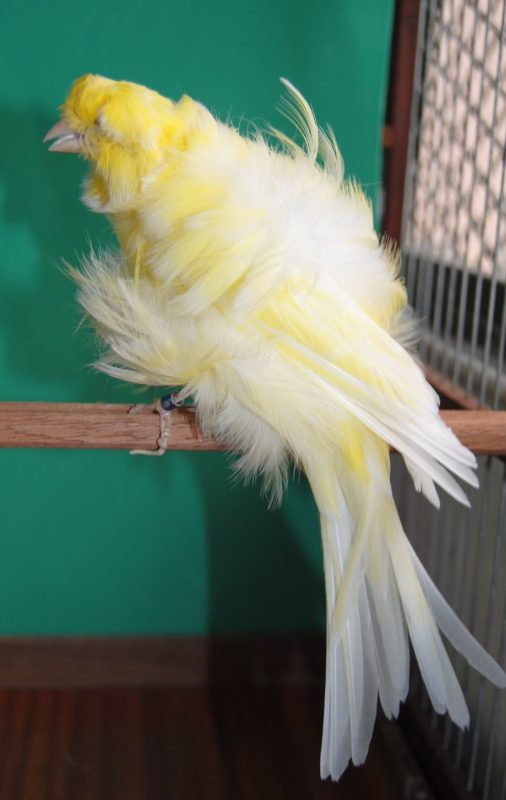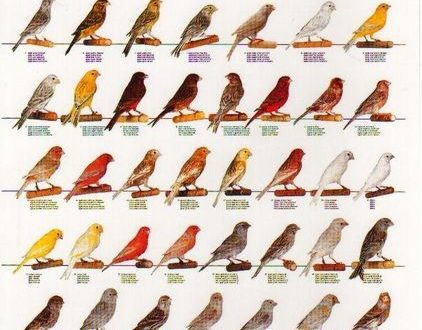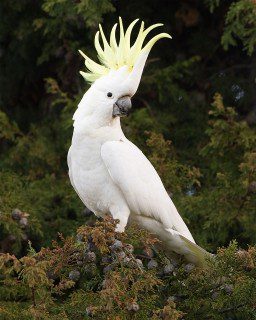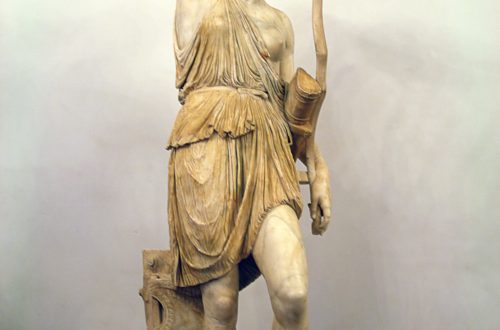
Curly canaries
Curly canaries have two main features: firstly, they are very large (body length up to 22 cm, and wingspan – 30 cm), and secondly, their feathers in the chest area are curled, hence the name of this breed variety.
Already in the 17th century, these birds were common in Holland and France, where they were highly valued for their original appearance and, of course, their melodic voice.
Despite their rather large size, curly canaries are very elegant birds. They have a compact, proportional physique, harmonious lines, beautiful wavy plumage, the bird’s body is held almost vertically. The plumage of curly canaries can be painted white or yellow, or have a variegated color.
Curly canaries changed and improved, so, in the process of selection, their body length increased, and in Italy the heat-loving curly canary was bred.
Unlike all other canaries, representatives of this species are difficult to maintain and care for. They are quite picky, their daily diet has its own characteristics, for example, it should include millet and canary seed, and in the summer – a lot of greens, in particular, wood lice. The content of rapeseed and flax in the diet, on the contrary, should be reduced. In case of malnutrition, curly canaries quickly get sick, so the future owner of these amazing birds needs to pay great attention to the issue of feeding.
The variety of curly canaries includes Northern Curly, French Curly, Parisian Curly (trumpeter), Italian Curly (Gibber), Swiss Curly, Padua Curly, Milanese Curly, and Fiorino.
Northern Curly Canaries reach 18 cm in length. These are beautiful, harmonious birds with a wide color palette. The back, head and tail of the bird practically continue one line. Feathers are curled on the back, chest and sides.
body length french curly canary, as a rule, does not exceed 17 cm, and the color can include a variety of colors. A feature of the breed is a small, slightly flattened head and a long, graceful neck. In a state of interest in something or tension, the canary stretches its neck forward almost at the same level with the line of the shoulders, which gives its entire body the shape of the number “7”.
Parisian Curly Canary (or whatever it is called “Parisian trumpeter”) is a large bird with a body length of at least 19 cm. The feathers of the Parisian trumpeter are long, thin and curly throughout the body, the claw on the back finger is bent with a spur, which is a characteristic feature of the breed, and elongated feathers hang low from the base of the tail. The posture of birds is graceful and straight. The color of the Parisian trumpeters can be different, the only exception is red.
Main feature Italian curly canaries (jibbers) are short feathers and lack of plumage in the chest area, on the shins and around the eyes. These funny birds are very demanding in care, their breeding is an extremely difficult task.
swiss curly reach 17 cm in length and also have a variety of colors, feathers curl in the chest, back and sides. The tail of the birds is traditionally bent under the perch, which gives the canary a crescent shape when viewed from the side. Compared to Italian Curly Canaries, Swiss Canaries are far less demanding to care for and breed easily in captivity.
Padua and Milanese Curly Canaries also have large sizes, their body length is about 18 cm. These are heat-loving birds that outwardly strongly resemble the Parisian trumpeter, but, unlike it, do not have long tail feathers and a claw bent by a spur.
Fiorino – this is a rather young breed, its calling card is a miniature crest on its head and curly hair in the area of uXNUMXbuXNUMXbthe “mantle”, “fins” and “basket”.
Curly-coated canaries have an average lifespan of 12-14 years in captivity.
Curly-coated canaries are very poor parents, they do not take good care of their offspring, so their chicks are often placed with canaries of other varieties.





